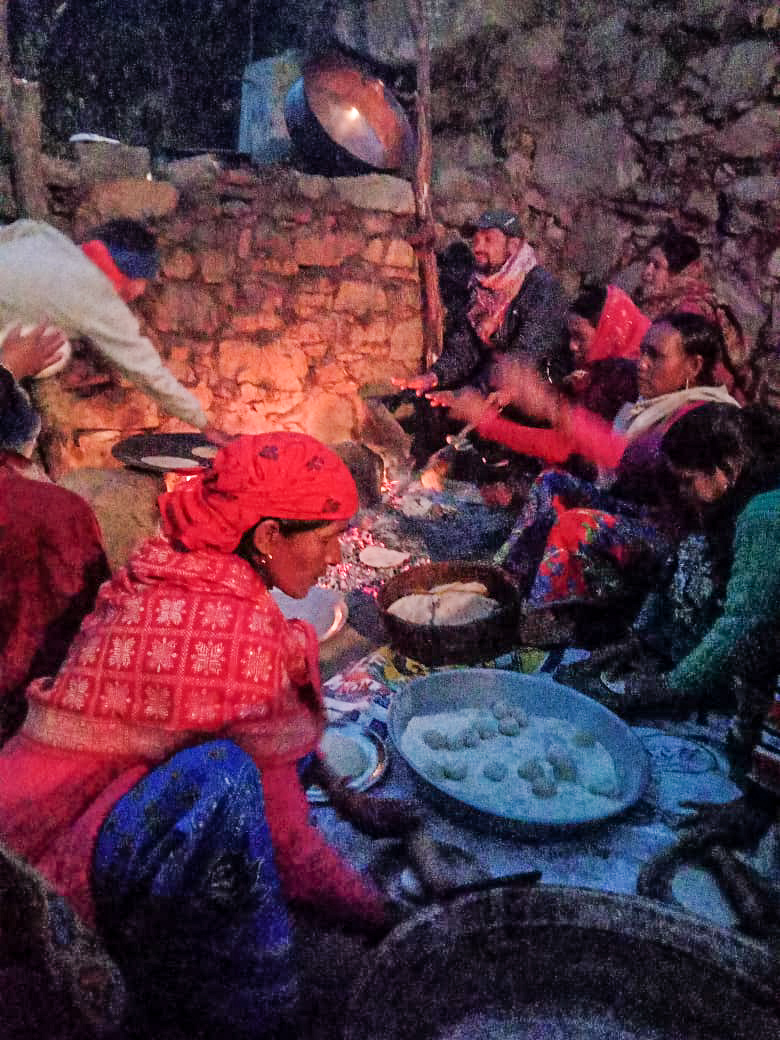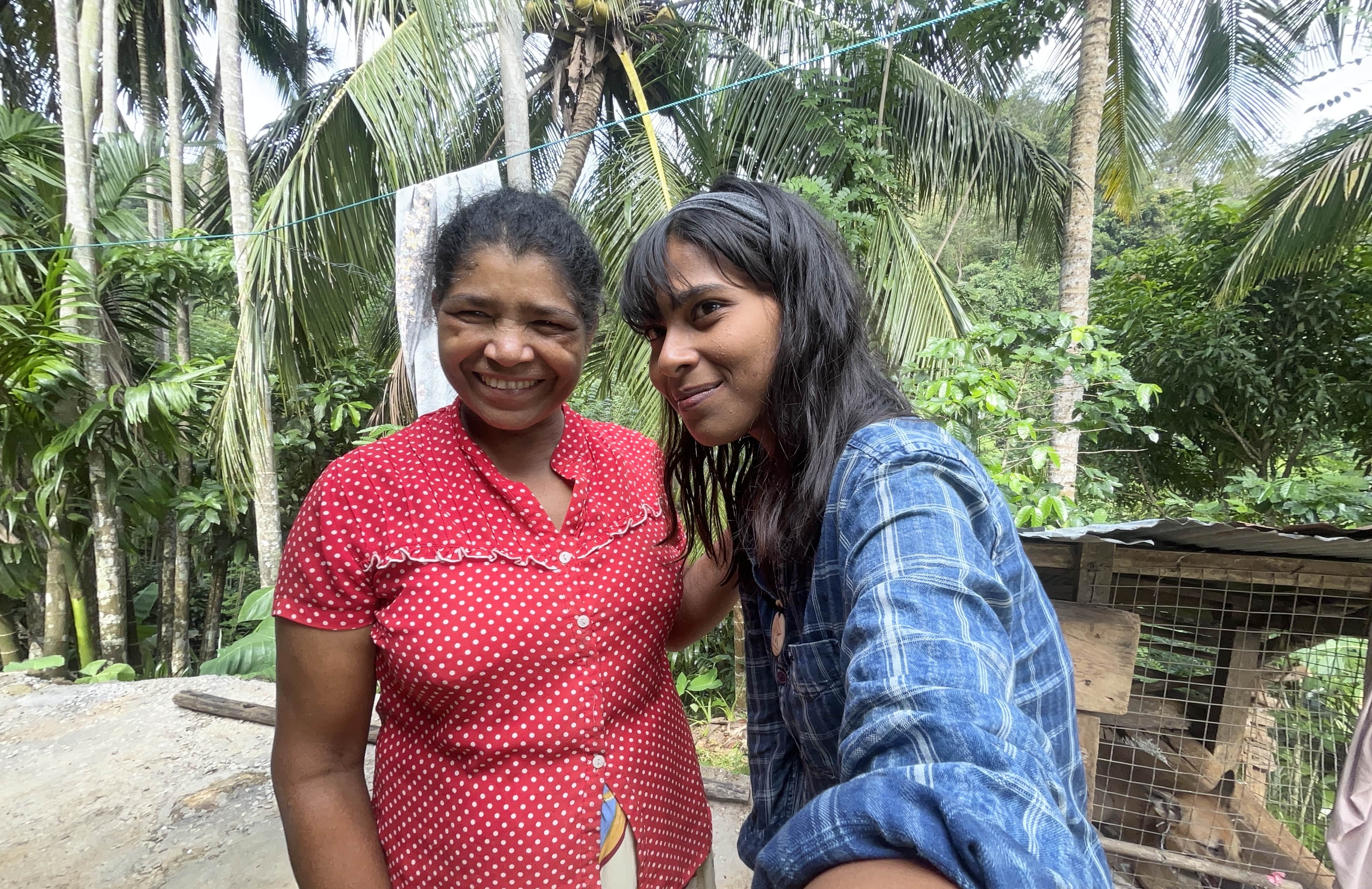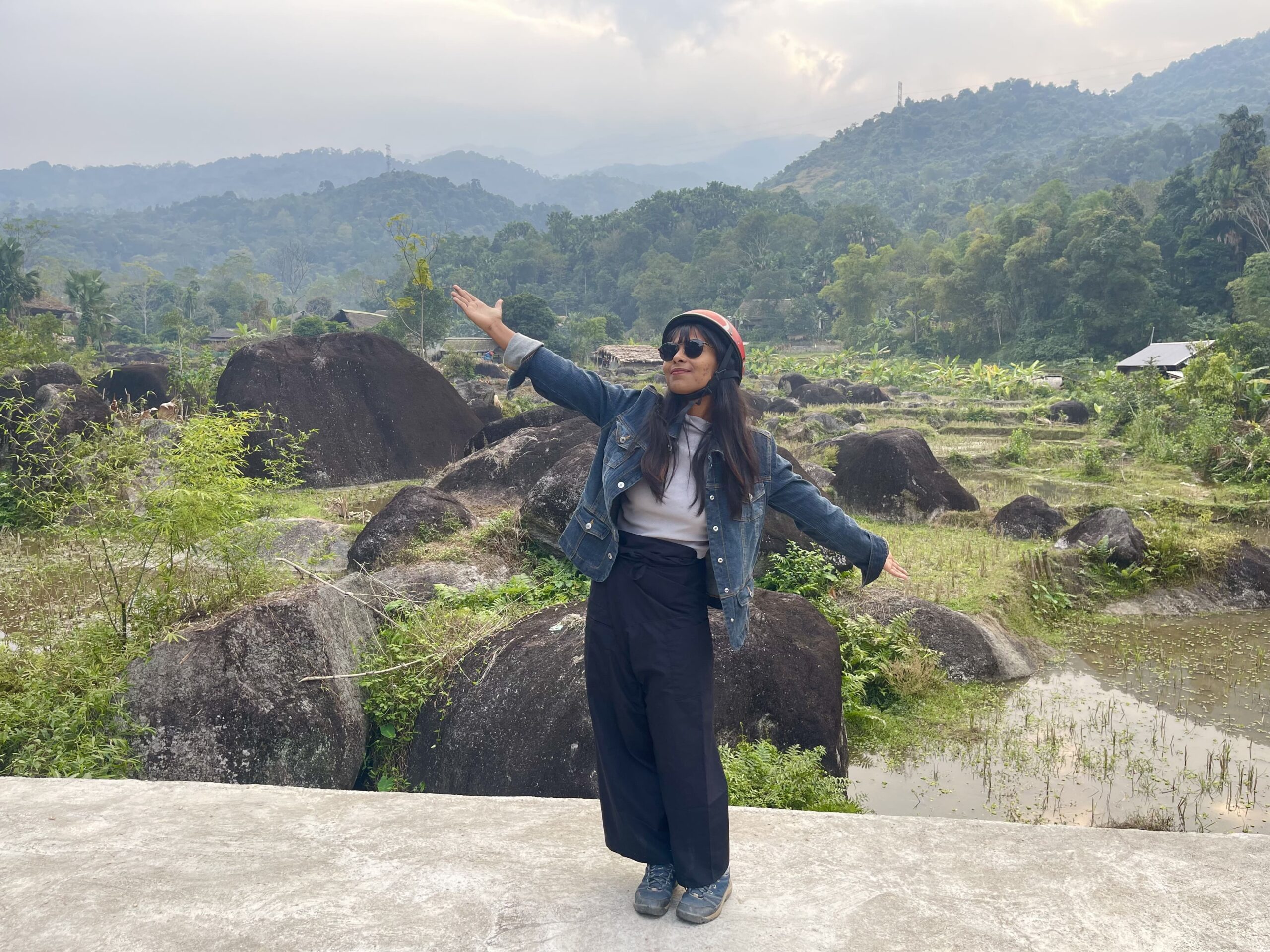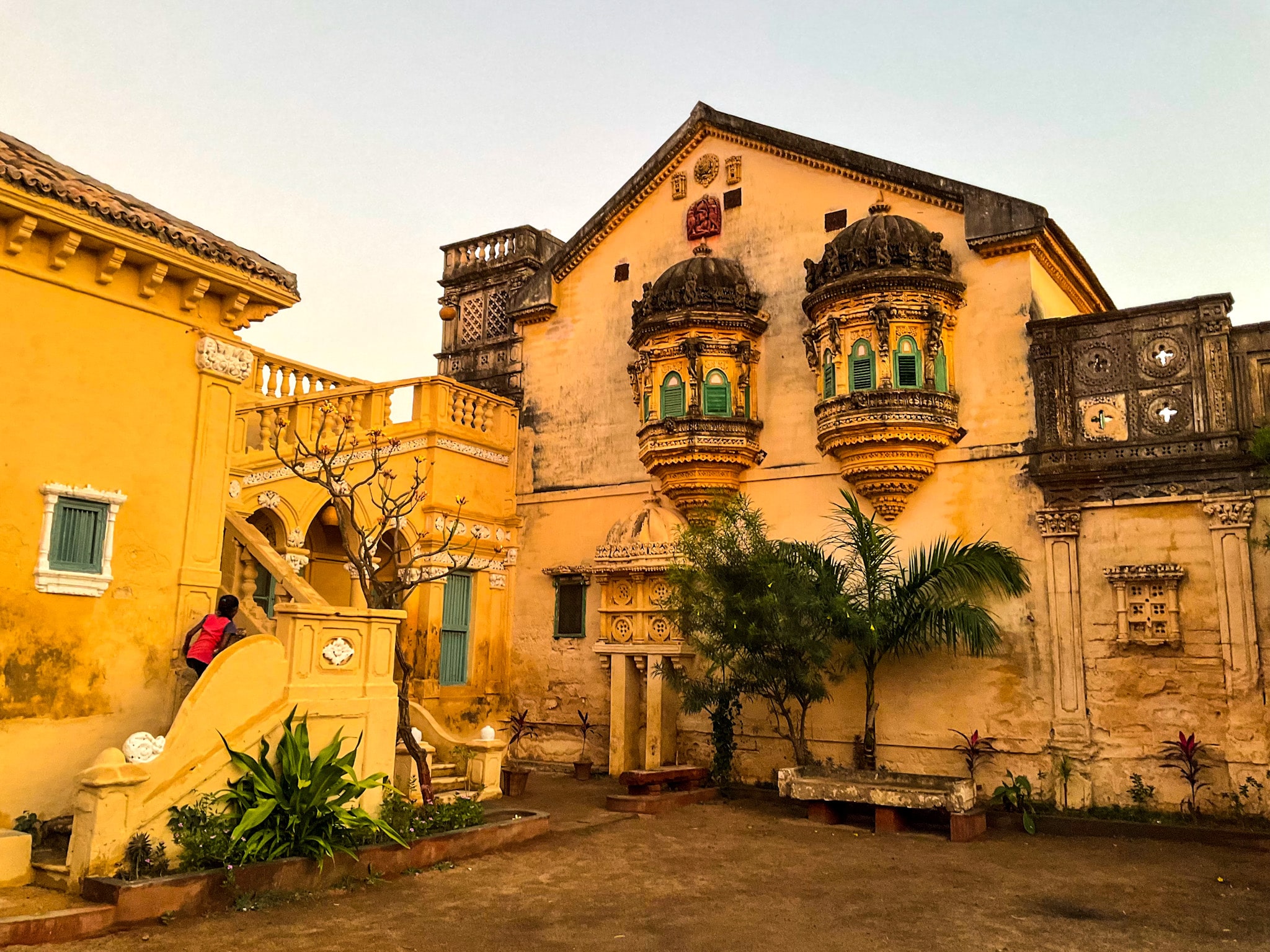Invited to A Garhwali Wedding in Ghori Khal Village
Months spent in the Garhwali homes of Uttarakhand! Read about the Garhwali wedding rituals and the rural culture of Uttarakhand.
Let’s Get Ready for A Garhwali Wedding
A wedding is one of those opportunities that expose you to the bottom of a culture. I call it an opportunity because it brings me closer to the people I have known separately, and sometimes as a crowd, but never as one. Again, I call it ‘one’ because together they did things I have never seen them doing alone. One such thing would be the Garhwali women smoking bidi in fire-gatherings.

Garhwal had been my home for one and a half months, in and out (Updated: four months in total). I would move out of Toliyon (a Garhwali village where I volunteered) on weekends and come back to volunteering on Monday or Tuesday. In this way, I would explore the cities and villages nearby. But my base had been Toliyon, not in terms of the time period or the number of places I visited from here, but with respect to the flexible exposure to Garhwali introspection I hurried myself into. My open vista to open rural culture started from here.
That could be the reason I feel a certain kind of heavy rush to invade all the hidden flux of love and simplicity I received from Garhwal. And I am always ready to go back to Uttarakhand (Both Garhwal and Kumaon). And let me romanticize – my invasion, unlike great invasions, is received as love. That’s how it was intended.
Also read – Kumaoni Holi – The Festival of Colours in the Mountains
Garhwali Wedding in Uttarakhand

Rooting back to the wedding, it was the collaborative efforts that pulled the strings. An Indian wedding, as you know, is a hotchpotch of the bride, the groom, their families, the impending dramas, food, reception, and of course, customs. In Garhwal, the wedding ceremonies continue for three days. I was supposed to make arsa, a Garhwali sweet made of rice. This ceremony is held on the first day of the wedding extravaganza.
Since my stay in Rudraprayag got extended, I missed the ceremonious fuss of arsa-making I was so looking forward to! But I made roti with the women from the nearby villages (Toliyon and Ghori Khal). We all gathered in the evening jostling in preparation for the interesting wedding dinner. Interesting, mostly because villagers brought their own utensils and dumped the food inside their containers, and guess what, went home!
In a huge chula, we made roti at intervals. Even though I could not understand most of what they were chattering about, the sound of an unknown tongue, or rather the very sound of each voice, each identity, each human, was exotic to my ears.
I was officially invited by the entire village, so I didn’t have a clue whose wedding it was. I vaguely knew it was the wedding of the son (or daughter!) of a certain dadaji, but my knowledge of the host subsided only in that common term ‘dadaji‘. During the wedding, I asked Seth Bhabi whether I was from the bride’s side or the groom’s side! As it turned out, I was from the groom’s side. But who is the groom?
Each floor of the house was decorated with colorful ribbons, wavering in the chilly air of the winter. The makeshift roof, a red sheet with blocks of green and white, was also greeting the guests upon arrival. Yet most of the villagers were not wearing wedding-like superficiality. Apart from a few teenagers, the women wore day-to-day sarees with local bangles and sparking bindi. I clad myself in local clothes for my wedding getup (a purple and green salwar suit I borrowed from the pradhan for the day) and didn’t leave a faint chance of flaunting it to the bhabis I have had a good rapport with.

In a huge chula, we made roti at intervals. Even though I could not understand most of what they were chattering about, the sound of an unknown tongue, or rather the very sound of each voice, each identity, each human, was exotic to my ears. They would speak Hindi for my benefit sometimes, yet I would want them to speak Garhwali. Nani once told me, ‘I thought Garhwali (language) would die in big cities like Srinagar’, as many colloquial languages got overpowered by the trendy dominance of other languages.
Never had I hiked through the jungle to attend a wedding. The new shoes (I borrowed from bhabi again) were not compatible with the cragginess of a forestry trail. It was still fine. But when we were coming back at around 9 pm with the only consolation of the mobile torch (tigers and bears are frequent in the jungle), I carried my heart in the sleeves.
Nevertheless, the wedding had been a beautiful brush-up against the Garhwali culture I have lived within. Even though most of the ceremonies are quite the same (haldi etc), one thing is different from the Bengali customs (I am a Bengali, and the only wedding culture I knew before travelling was the Bengali wedding culture). Here the bride has to give away some amount of money to be allowed to enter her new home. In Bengali culture, it’s generally the groom.
On the last day, when the bride finally arrived at the groom’s house, a line of relatives followed her, lugging a crew of presents for the newly-tied relatives (mixers, clothes, and such). Each time one person from the groom’s family blessed the couple, she/he received a gift from the bride’s family. The custom of dowry is much embedded, like in most Indian cultures, here it is only in a simpler form.
I call it an opportunity because it brings me closer to the people I have known separately, and sometimes as a crowd, but never as one. Again, I call it ‘one’ because together they did things I have never seen them doing alone. One such thing would be the Garhwali women smoking bidi in fire-gatherings.
Also read – ‘Tumaru Nau Kisso?’ Living Rural Life in the Garhwal Region
How to Reach Ghori Khal

If you want to explore rural Uttarakhand, here is how you can reach Ghori Khal:
By bus: Buses run regularly from Delhi, Rishikesh, Dehradun, Devprayag, and other cities to Srinagar (bus fare: Rs. 250 from Rishikesh, Rs. 60 from Devprayag). From Srinagar, you can board the bus going to Pauri. Two scheduled buses go from the Srinagar bus stand: the first bus at 11:30 am and the second one at 3 pm. Make sure you don’t miss the bus, as after 3 pm no buses would go uphill. You can drop the bus off at a small village called Markhora (though the signboard shows Markhola). A one-kilometer hike through the jungle and you will reach Ghori Khal. You can ask any local for direction and they will guide you through.
By train: The nearest railway station is Kathgodham Railway Station in Dehradun. From there you need to follow the abovementioned route.
By air: The nearest airport is Jolly Grant Airport in Dehradun. Again, follow the bus route to reach Ghori Khal.
Also read – How to Spend the Best Time in Munsyari
Where to stay in Ghori Khal

Being a rural village unexplored by outsiders, there’s no accommodation available in Ghori Khal. However, you can hike for another few meters to reach the nearby village Toliyon (you can ask the locals for directions). White Peak Homestay provides a comfortable stay along with cooking facilities, or, even better, you can cook for yourself using their kitchen. Camping, trekking, birdwatching, bonfires – they have it all. Also, you can live the raw rural culture and spend time in greenery while helping them out in farming (if that interests you). For booking, check out whitepeakhomestay.com or call 9997332790.
(If you want to know more about the rituals of Garhwali wedding, read this article by Today’s Traveller).
Regional weddings differ in cuts and flairs. More than the customs, the behavioral and social approach of the Garhwali wedding rejoiced in the thin air of Uttarakhand.
Have you been part of the wedding rituals in Garhwal?
Support my solo adventures around the world by joining the Patreon community.
Live the Adventure
Get weekly articles delivered to your doorstep and stay up-to-date with my new travel stories.





Leave a Reply